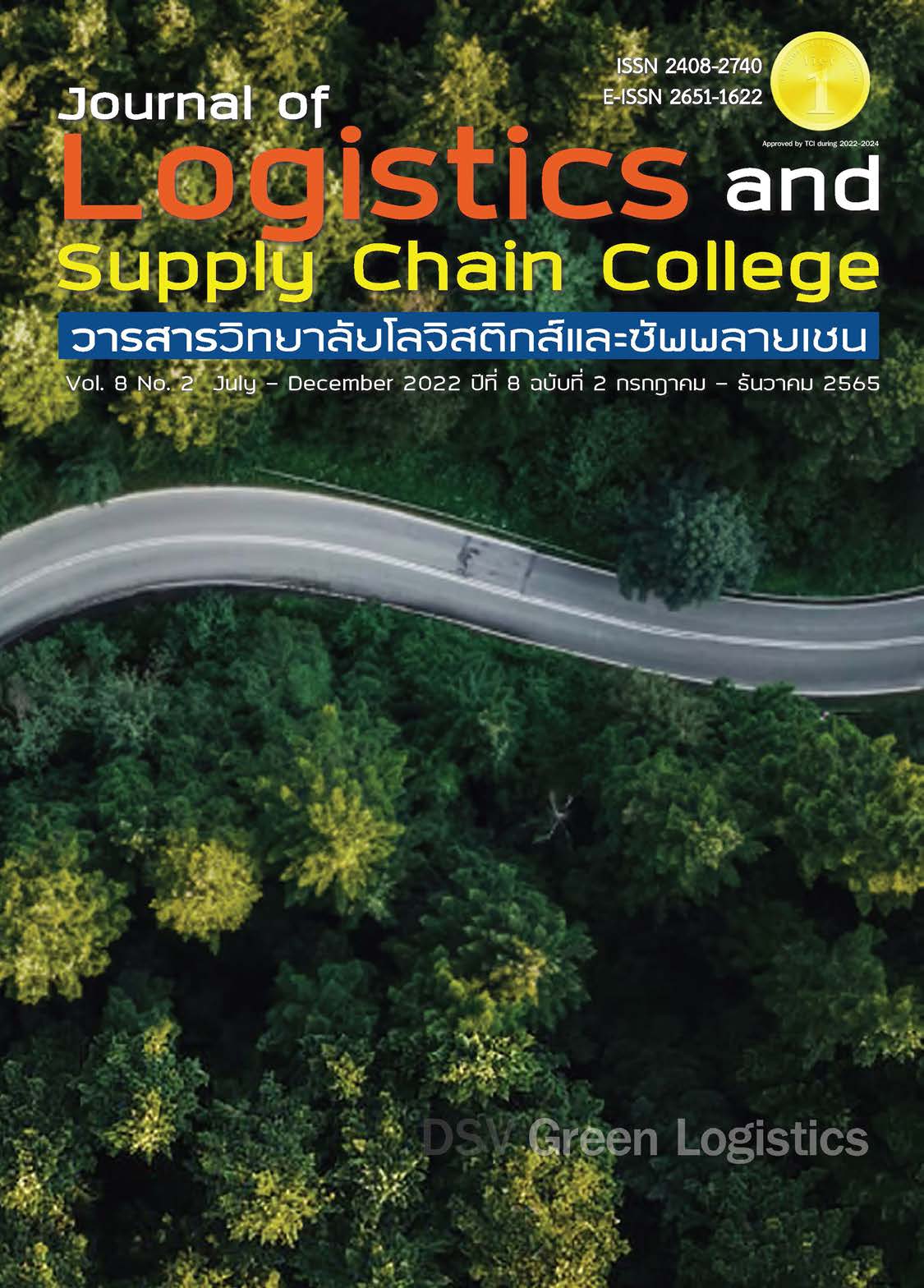A Model for Developing Competence and Supply Chain Collaboration To Build Competitiveness of Pineapple Farmers in Loei Province
Keywords:
Supply chain capability, Collaboration, Competitiveness, AgriculturalAbstract
The objectives of this research were 1) to study a model of capacity development and supply chain cooperation 2) to study the direct influence Indirect influence of talent and supply chain collaboration on competitiveness. 3) To presenting a model of capacity and supply chain cooperation that affects the competitiveness of pineapple farmers in Loei Province. There were 1,243 pineapple producers, which made up the study’s sample size. The sample consisted of 362 pineapple farmers. The tool used was a questionnaire. The statistics used were Frequency, Mean, and Standard Deviation and causal influence analysis of factors used to examine the coherence of the model with the empirical data. The results showed that supply chain capabilities and supply chain collaboration have a positive direction in influencing on building competitiveness were statistically significant at the 0.05 level and were positively correlated by Chi-Square = 52.063, df=39, p-value=.079, Relative Chi-square=1.335, GFI=.978, AGFI=.949, RMR = .008, RMSEA=.030. Official competition farmers must manage the farmland according to the quality of the soil. Anticipating customer demand and productivity buying quality inputs and quality grading of pineapples before delivery to customers and delivered on time. There is a support plan in case the customer doesn't pick up on time to find out how to save costs and look for new ways to improve it. This will help develop and increase competitiveness.
References
กรมส่งเสริมการเกษตร. (2564). ผลการขึ้นทะเบียนเกษตรกรผู้ปลูกสับปะรด ตามที่ตั้งแปลง ปี 2563/64 ระบบฐานข้อมูลเกษตรกรกลาง (ทบก.). กรมส่งเสริมการเกษตร.
ปณิตา แจ้ดนาลาว และธรินี มณีศรี. (2563). รูปแบบการจัดการโซ่อุปทานวิสาหกิจชุมชนกลุ่มสินค้าเกษตรอย่างยั่งยืน. วารสารชุมชนวิจัย มหาวิทยาลัยราชภัฏนครราชสีมา, 14(1), 133-145.
ชาญชัย พรมมิ และสวัสดิ วรรณรัตน์. (2558). โมเดลสมการโครงสร้างของการจัดการซัพพลายเชนและพันธมิตรทางการค้าต่อความได้เปรียบทางการแข่งขันของผู้ประกอบการหนึ่งตำบลหนึ่งผลิตภัณฑ์ (OTOP). วารสารบริหารธุรกิจเทคโนโลยีมหานคร, 12(2), 35-53.
วสันต์ สกุลกิจกาญจน์ และจิตอุษา ขันทอง. (2563). การพัฒนาแบบจำลองความสัมพันธ์เชิงสาเหตุของปัจจัยที่มีอิทธิพลต่อความร่วมมือห่วงโซ่อุปทานของวิสาหกิจขนาดกลางและขนาดย่อมไทย. วารสารศรีนครินทรวิโรฒวิจัยและพัฒนา (สาขามนุษยศาสตร์และสังคมศาสตร์), 12(24), 91-102.
เสริมศิริ นิลดำ, กษิดิศ ใจผาวัง และดรัณภพ อุดแน่น. (2562). การยกระดับเกษตรกรผู้ปลูกสับปะรดนางแลสู่การเป็นเกษตรกรปราดเปรื่อง. วารสารสังคมศาสตร์ มหาวิทยาลัยศรีนครินทรวิโรฒ, 22(2), 328-347.
สำนักงานเศรษฐกิจการเกษตร กระทรวงเกษตรและสหกรณ. (2561). แผนแม่บทการพัฒนาโลจิสติกส์และโซ่อุปทานภาคการเกษตร (พ.ศ.2560-2564). ค้นเมื่อ 12 มีนาคม 2565, จาก: https://www.oae.go.th/view/1/เอกสารเผยแพร่/TH-TH/?page=3.
สำนักงานเกษตรและสหกรณ์จังหวัดเลย. (2561). แผนพัฒนาการเกษตรและสหกรณ์ของจังหวัดเลย (พ.ศ. 2561– 2565). ค้นเมื่อ 12 มีนาคม 2565, จาก: https://www.opsmoac.go.th/loei-strategic-preview-422791791806.
สำนักงานคณะกรรมการพัฒนาเศรษฐกิจและสังคมแห่งชาติ. (2560). แผนยุทธศาสตร์การพัฒนาระบบโลจิสติกส์ของประเทศไทย ฉบับที่ 3 (พ.ศ. 2560 – 2564). ค้นเมื่อ 12 มีนาคม 2565, จาก: https://www.nesdc.go.th › logistic › plan3.
สำนักวิจัยเศรษฐกิจการเกษตร สำนักงานเศรษฐกิจการเกษตร กระทรวงเกษตรและสหกรณ์. (2561). การศึกษาโซ่อุปทานและโลจิสติกส์สินค้าสับปะรดโรงงาน. เอกสารวิจัยเศรษฐกิจการเกษตร เลขที่ 113. ค้นเมื่อ 12 มีนาคม 2565, จาก: http://www.oae.go.th/assets/portals/1/fileups/baerdata/files/การศึกษาโซ่อุปทานและโลจิสติกส์สินค้าสับปะรดโรงงาน.pdf.
Ploenhad, J., Laoprawatchai, P., Thongrawd, C., & Jermsittiparsert, K. (2019). Mediating role of competitive advantage on the relationship of supply chain management and organizational performance on the food industry of Thailand. International Journal of Supply Chain Management, 8(4), 216-226.
Supply Chain Council. (2017). Supply Chain Operation Reference Model: SCOR Version 12.0. Pittsburgh. PA: Supply Chain Council, Inc.



